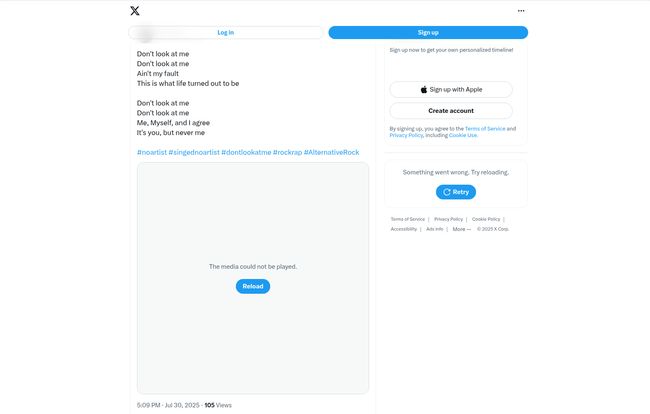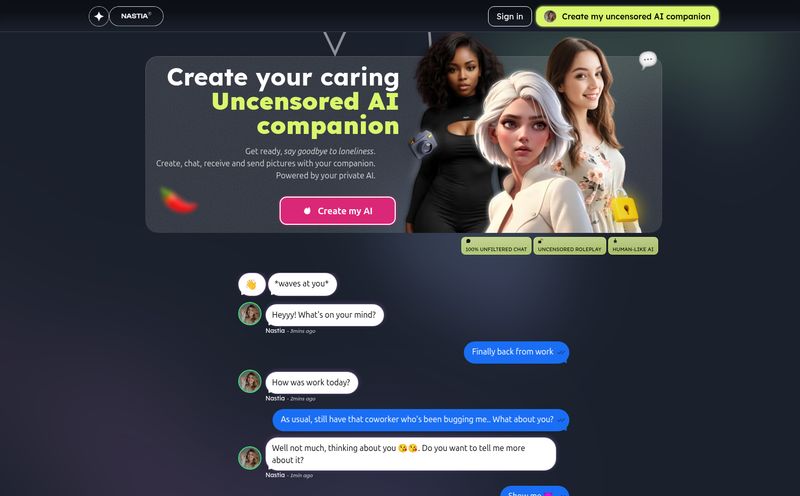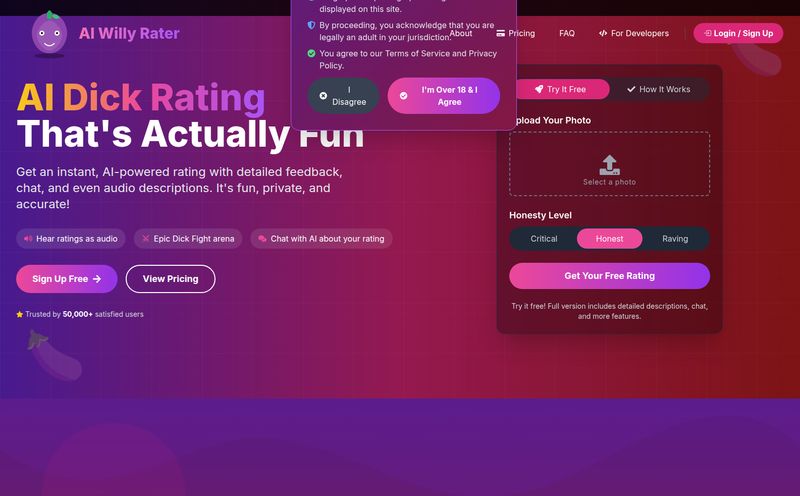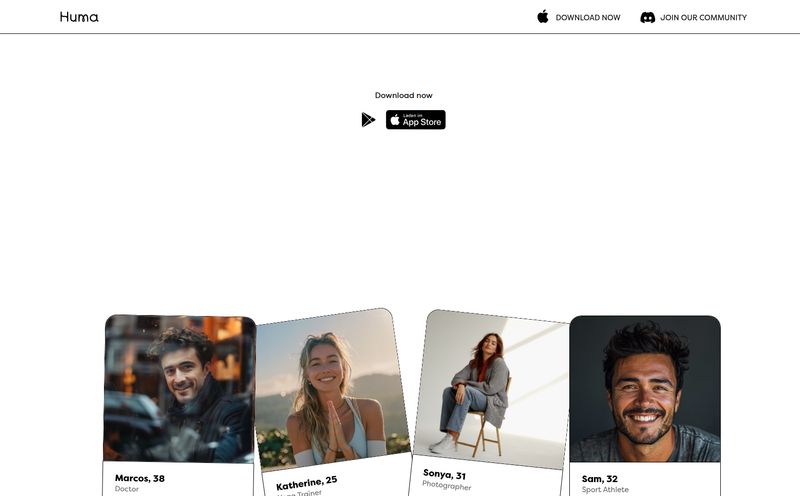I get a little buzz every time I hear about a new tool that mixes AI with creativity. It's the wild west out there right now, with new apps and platforms popping up daily, all promising to change how we create, work, and even how we tell stories. So when the concept of TalesTime floated across my desk, my ears perked up. The pitch? Simple, brilliant, and right on the pulse of the current tech zeitgeist: A free library of AI-inspired children's stories, curated by humans, with a new one added every single day.
I mean, come on. For parents of preschoolers, that sounds like a dream. An endless stream of fresh content to keep the little ones engaged, without reaching for the same tattered copy of Goodnight Moon for the thousandth time. It felt like a perfect application of AI – taking the heavy lifting of content generation and pairing it with the essential wisdom of human oversight. It’s a model I’ve seen work wonders in other areas of content marketing.
But then, things got a little strange. This story has a twist.
What Was TalesTime Supposed to Be?
Let's rewind. The idea behind TalesTime was genuinely compelling. It was designed specifically for the preschool crowd, a notoriously tough audience to keep entertained. The platform promised to be a digital library where parents and kids could read or listen to brand-new tales every day.
The magic ingredient was its hybrid creation process. Stories were “inspired by AI,” which suggests algorithms were used to generate plots, characters, or initial drafts. Think of it like a tireless, imaginative robot brainstorming partner. But—and this is the crucial part—the stories were then “curated by humans.” This human element was the gatekeeper, the quality control, the heart of the operation. It ensured the AI's occasionally weird outputs were polished into coherent, charming, and age-appropriate stories. Its a fascinating concept, right?

Visit TalesTime
The Allure of AI-Generated Bedtime Stories
So why was I, a seasoned SEO guy, so interested in a kids' story app? Because it represents a massive trend. The potential benefits of a platform like TalesTime are huge. First off, the promise of free access is a game-changer for many families. Budgets are tight, and a constant supply of quality educational entertainment without a subscription fee is pure gold.
Then there's the daily update schedule. Kids thrive on novelty. A new story every day combats the content fatigue that every parent knows too well. It’s a clever hook to build a daily habit and keep users coming back. This daily engagement model is something we chase in the traffic generation game constantly. It’s the holy grail.
And of course, there's the AI itself. While TalesTime may have just scratched the surface, the potential for AI in this space is staggering. Imagine stories that could be personalized with your child's name, their favorite animal, or even incorporate details from their day. We're not there yet on a mass scale, but platforms like TalesTime are the first steps on that path.
The Human Touch in an AI World
Let’s be honest, letting an AI run wild telling stories to preschoolers is a recipe for disaster. We've all seen the bizarre images and nonsensical text that AI can produce. That's why the “human-curated” part of TalesTime’s description was so important. It was their secret sauce.
This human layer does a few critical things:
- It's a Safety Net: A human curator ensures stories are free of weird, scary, or inappropriate content that an AI might accidentally generate.
- It Adds Warmth: Curation can refine the tone, ensuring the stories have emotional depth and resonance that a machine might miss.
- It Upholds Values: A human can check that the stories carry positive messages, good morals, and are culturally sensitive.
In my experience, the best results from AI tools always come from a partnership. AI provides the scale and the raw material; humans provide the taste, the context, and the conscience. It’s a powerful combination.
But Wait, Where Did TalesTime Go?
So, brimming with professional curiosity, I went to check out talestime.io for myself. I was ready to see this AI-human synergy in action. And I found… nothing. Well, not nothing. I found a domain parking page from Sedo with a crisp, clear message: “Buy this domain.”
The platform is a digital ghost. A great idea that, for one reason or another, seems to have vanished into the ether.
What happened? We can only speculate. Did they run out of funding? Was the tech harder to scale than they thought? Maybe the challenge of maintaining quality with AI-generated content was too high. Or perhaps they were simply acquired and absorbed, their technology living on in some other form. The life of a tech startup is often brutaly short. It's a stark reminder that a brilliant idea is only half the battle; execution and market staying-power are the other half.
The Bigger Picture: AI Storytellers Aren't Going Anywhere
The fact that TalesTime seems to have fizzled out doesn't mean the idea is dead. Far from it. TalesTime was less of a final product and more of a sign of things to come. The concept is too powerful to just disappear. Other platforms are playing in this space, and more will undoubtedly emerge. The genie is out of the bottle, and it's telling bedtime stories.
For parents, this means a future with more personalized, accessible, and diverse content for their children. For creators, it presents both a challenge and an opportunity. Can you use these tools to augment your own creativity? To reach new audiences? For us in the SEO and content world, it's another evolution to watch, another type of content to learn how to optimize and rank.
Should We Be Worried? A Balanced View
Of course, there are potential pitfalls. One of the cons I immediately thought of with the TalesTime model was the potential for inconsistent quality. Even with human curators, if the AI's base output is poor, the final product can feel formulaic or soulless. It's a genuine risk. There's also the danger of pigeonholing content. TalesTime was focused on preschoolers, which is great, but it highlights how niche these tools can be.
I’ve always felt that technology is a mirror. The rise of AI storytellers reflects our desires: for endless entertainment, for personalized experiences, for easier ways to educate and connect with our kids. But we have to be careful not to lose the magic of a shared story, a book passed down through generations, or the unique voice of a human author. The key, as TalesTime seemed to understand, is balance.
Frequently Asked Questions About AI Storytellers
- What was the concept behind TalesTime?
- TalesTime was designed as a free digital library of children's stories for preschoolers. Its main hook was that the stories were generated by AI but then carefully selected and edited by humans, with a new story released daily.
- Was TalesTime a free service?
- Yes, according to its description, one of its primary advantages was that it was completely free to access, with no subscription fees.
- Why is human curation important for AI-generated stories?
- Human curation is absolutley essential for safety, quality, and appropriateness. A human editor ensures the stories are free of errors or bizarre content, have a positive message, and are emotionally engaging for a young audience.
- Is the TalesTime website still active?
- No. As of late, the domain talestime.io is listed for sale, which indicates the platform is no longer operational.
- Are there other AI storytelling tools for kids?
- Yes, the concept is growing in popularity. While I won't name specific competitors here, a quick search for "AI story generator for kids" will reveal several other platforms and apps that are exploring this technology.
- Is AI-generated content safe for children?
- It can be, but only with strict human oversight. I would not recommend letting a child use an open-ended, unmonitored AI chatbot. Platforms that use AI as a starting point and then have a rigorous human editing and curation process, like the one TalesTime proposed, are a much safer bet.
A Story That's Just Beginning
In the end, the story of TalesTime is a bit of a sad one—a great idea that didn't seem to make it. But it's also an exciting prologue. It gave us a glimpse of what the future of storytelling might look like. It raised important questions about the role of AI in our creative lives and the lives of our children. While you can't visit talestime.io for a story tonight, the tale of the AI storyteller is one that is only just getting started. And I, for one, will be eagerly reading the next chapter.
References and Sources
- http://talestime.io - (Note: Domain was observed to be for sale, indicating the service is defunct).



